There are many reasons why a car battery light comes on when driving including a faulty battery, loose or dirty battery terminals, a faulty alternator, one or more blown fuses, a parasitic drain on the battery, or a snapped auxiliary belt.
The car battery light stays on when the engine management system detects a problem with how the battery is charging.
It’s normal for the battery light to flash on and then off when you start the engine. This is the ECU carrying out a check of the battery and charging system.
If the battery light stays on or comes on when you are driving then this indicates a problem with the battery or how it is being charged.
What Does It Mean When The Car Battery Light Comes On?
If you notice that the car battery light is staying on after you start the engine, or even flickering on and off intermittently when you are driving, then you could have a problem with the electrical system or battery.
When it comes to problems with your car battery or the battery charging system, there can be many causes. Some are easily checked and others require the use of specialist equipment to diagnose.
Here are a few of the reasons why the car battery light can be triggered.
1. A Dead or Faulty Battery
Probably the most common reason for a battery warning light is a battery that will no longer charge properly. As batteries age, their ability to receive and hold a charge diminishes.
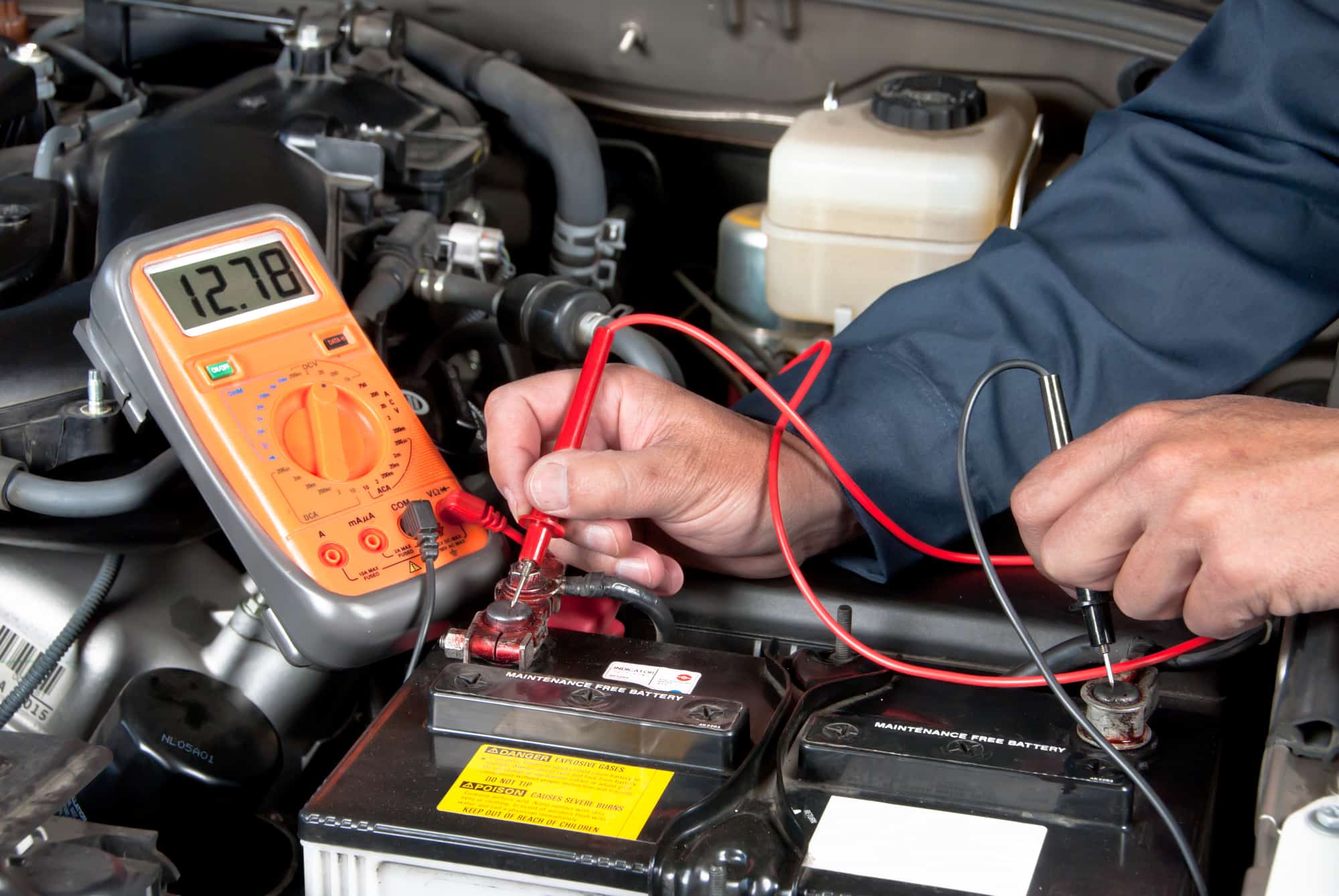
A faulty with the battery or battery charging system can cause the engine to stall
Modern vehicle batteries are sealed, 12 volt units that contain 6 or more individual “cells”. Each cell comprises of two charging plates submerged in acid that have the ability to store electrical charge supplied by the alternator via a voltage regulator.
Some car batteries are lead acid and some are calcium, but they essentially work in the same way. Over time, the efficiency of each battery cell will drop as will its ability to recharge. This can trigger a battery warning light if the overall battery voltage drops or fluctuates.
When you are driving, the battery should be recharging. If the battery warning light comes on when you are driving this can indicate a problem with the battery.
2. A Faulty Alternator
Another common reason for the battery light to come on is a bad or failing alternator or voltage regulator.
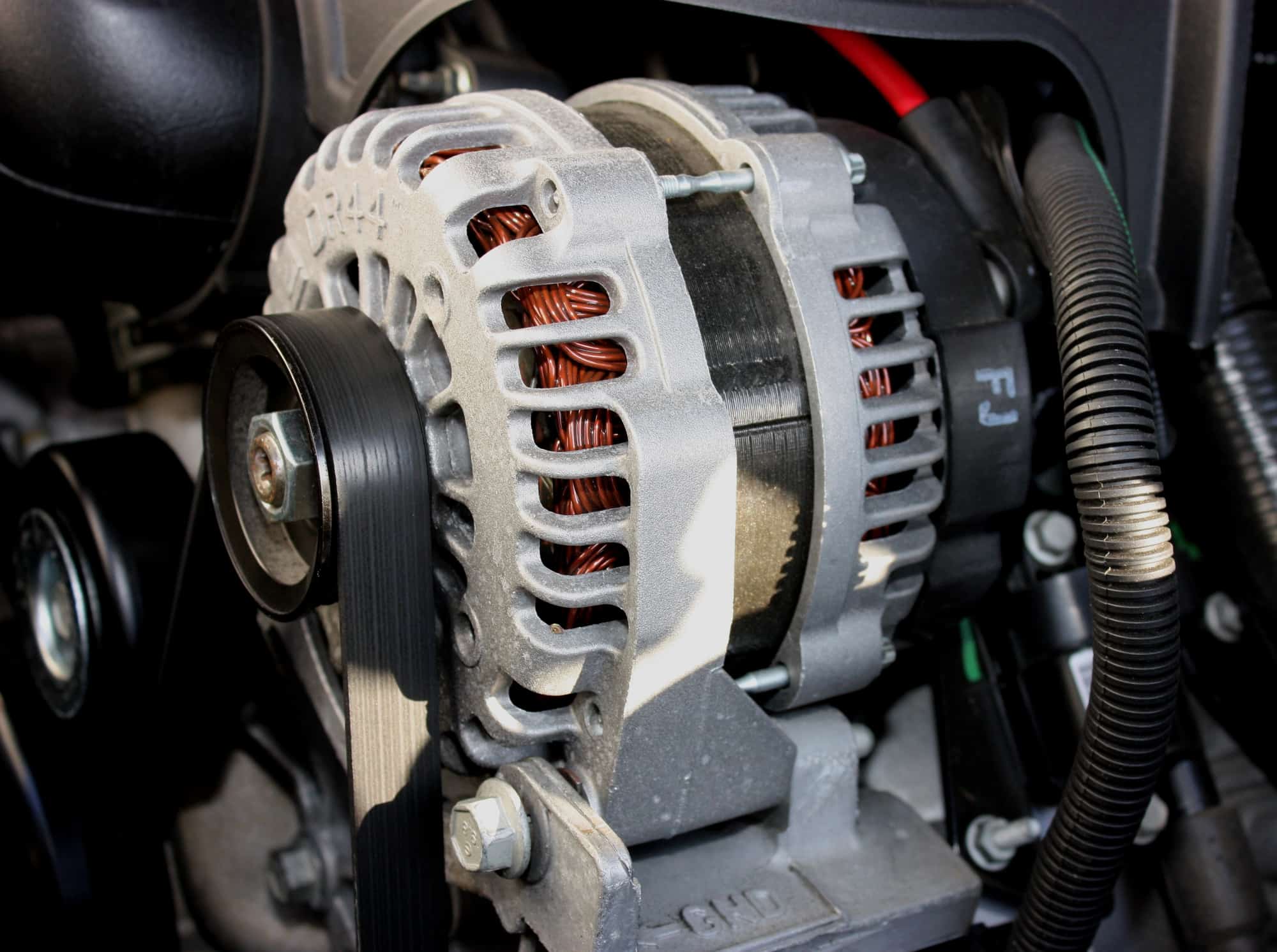
When you are driving, the alternator should be providing most of the electrical power needed by your vehicle along with charging the battery. If the ECU detects a problem with the amount of power coming from the alternator it will trigger the battery light.
A properly functioning alternator should provide between 13 and 15 volts and this is easily tested with a multimeter. Symptoms of a faulty alternator include the vehicle not starting, headlights dimming or a charging system warning light on the dashboard.
Starting the engine in your car will deplete the charge in the battery by around 3%. This leaves plenty of power to restart an engine if necessary or to supply extra power when needed. However, it’s very important that the amount of charge in the battery does not drop too low, as this can reduce the lifespan of the battery.
3. Loose or corroded battery clamps
Depending on the location of the battery, sometimes the battery clamps can become oxidised or corroded. This can affect how the battery operates and can cause intermittent problems with the electrical system leading to a battery light on the dashboard.

Corrosion build up on car battery terminals
Corroded battery clamps can be caused by damp conditions, over or under charging of the battery and can sometimes just be caused by old age and improper battery maintenance.
4. Worn or snapped serpentine (alternator) belt
The alternator belt is just as important as the alternator when it comes to charging the battery. The alternator belt (also called a serpentine or auxiliary belt) connects the alternator to the rotating crankshaft and this drives the alternator when the engine is running.
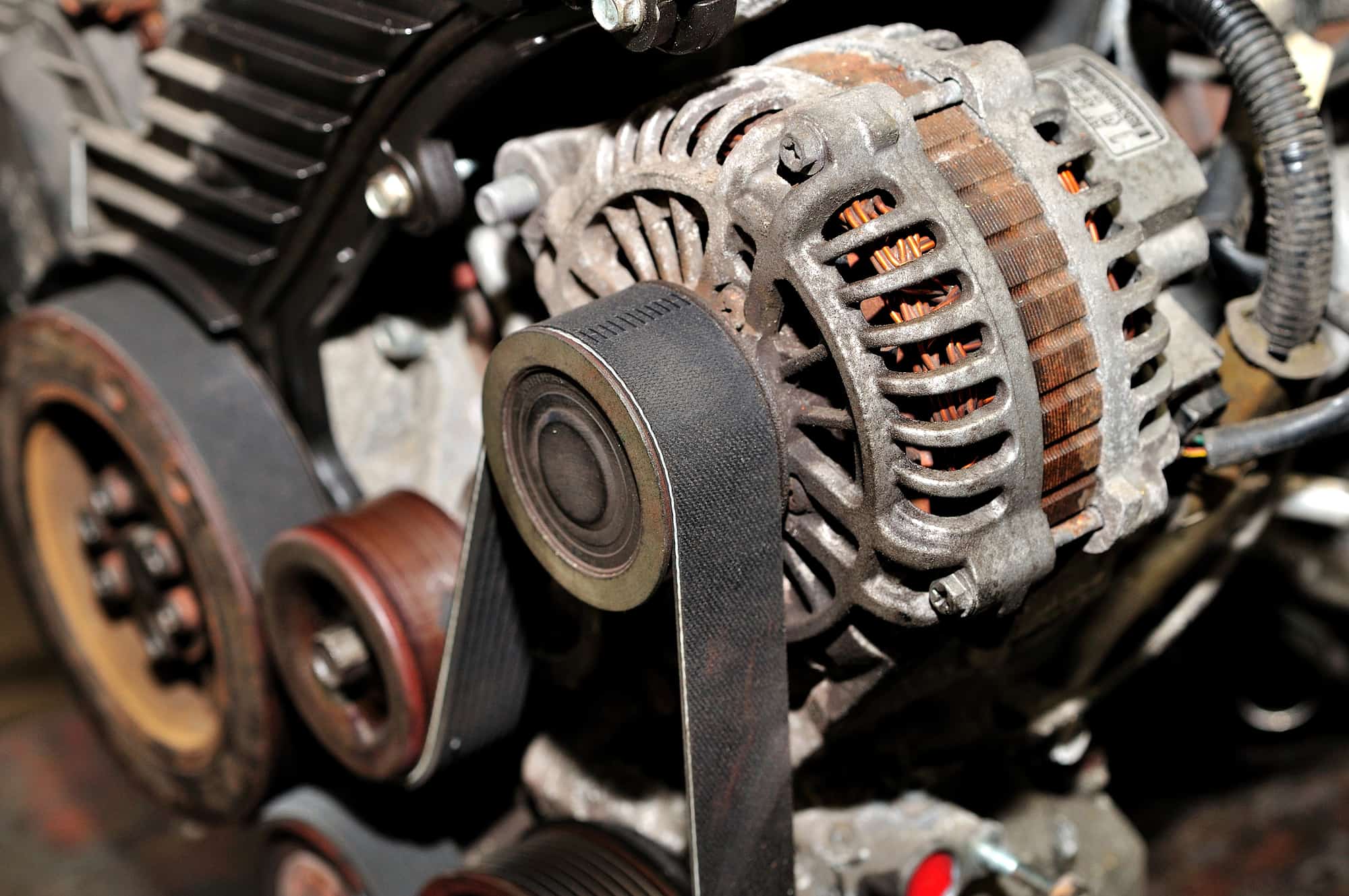
If the alternator belt is slipping or has completely failed, then the alternator will not run and will not provide any power to the battery. A slipping alternator belt may cause an intermittent battery light.
Some vehicles have a separate belt that just drives the alternator (and sometimes the air conditioning). On other vehicles, the auxiliary belt will drive the water pump too.
5. Aftermarket electronics causing a drain on the battery
Fitting extra electronics to your vehicle can cause problems with the battery. Devices such as phone chargers, DVD players, amplifiers and even portable cooling boxes can mess with the battery voltage and can act as a “parasitic drain” on the system.
If you have too many electronic devices hooked up to the battery a battery warning light may be triggered due to the excessive load on the charging system. Even if the engine is running, the alternator can only provide a certain amount of power and if over loaded it can cause problems.
Aftermarket additions to the vehicle can also cause a drain on the battery when parked and when the engine is off. This can be caused by not installing a device properly and if a device remains “live” when the vehicle is not running.
6. Worn or frayed battery wiring
The positive and negative wiring to a battery can sometimes become damaged and frayed, and this can be another cause of the battery warning light flashing.
Depending on where in the vehicle the battery is mounted, it may be more exposed to dirt and grime, or the effects of hot and cold weather. This can harden the wiring that feeds the battery, sometimes causing the coating on the cable to split resulting in damage to the underlying cable strands.
Any damage to the battery wiring will affect the amount of current that can safely come and go from the battery. Damaged battery cables will usually cause intermittent gremlins with the vehicle electrics, causing dashboard warning lights to illuminate and error codes to show up in the ECU memory. Sometimes an exposed cable can also become a fire hazard, especially if it causes a short circuit.
7. A new battery has not been properly coded to the vehicle
If a car battery is not coded to a vehicle when necessary, it can lead to the battery being over or under charged.
On many newer vehicles, the battery must be “coded” to the vehicle so that it can be monitored, used and charged efficiently by the ECU.
This is not a problem on older vehicles with simple charging systems that put less demands on the battery. However, modern vehicles use all sorts of techniques to make better use of the battery and to improve the efficiency of the engine.
Some vehicles are fitted with intelligent battery sensors that monitor the voltage, and current state of charge and discharge of the battery. This information is then used to intelligently charge the battery only when it is necessary and can also be used to stop and start the alternator when it is not needed.
What Next – How to troubleshoot the Cause of the car battery light
Figuring out why the car battery light is coming on can sometimes be easy and other times be frustratingly difficult.
There are a few simple checks that you can do that may help to pinpoint the cause of the problem.
1. Check the Battery
The battery can easily be checked using a basic multimeter or voltmeter. Most OBD code readers will also give you information on the state of the battery.
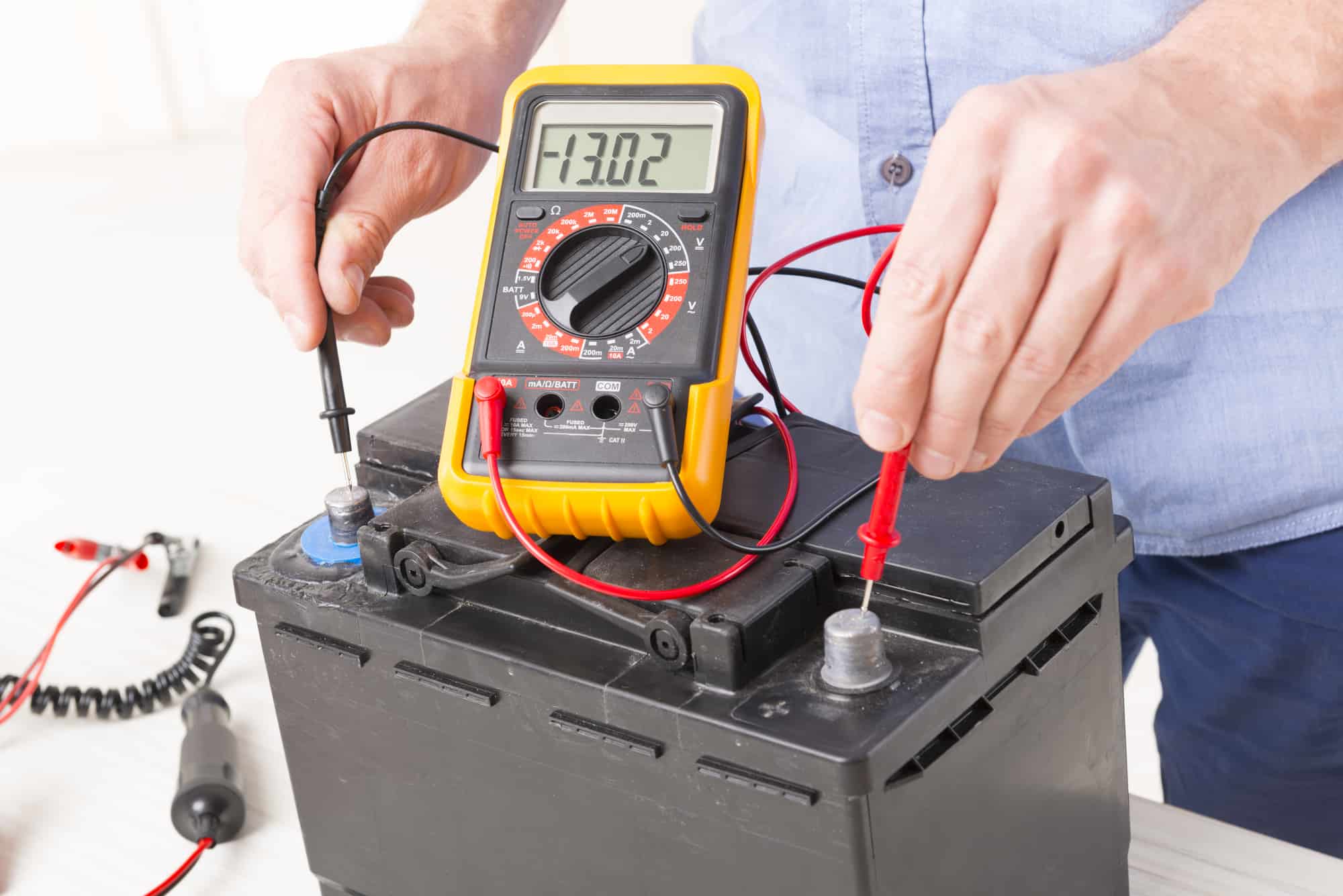
If you want to check the battery with a multimeter then shut off the engine and anything that may put a drain on the battery before you start.
Switch the multimeter to DC voltage and attach the positive lead to the positive battery terminal (usually red in color). Attach the negative lead to the negative terminal (brown or black in color).
The reading should be 12.5 Volts, plus or minus 0.2 Volts. If it is less, then the battery is not charged properly.
2. Check the alternator
Symptoms of a faulty alternator include car not starting, headlights dimming or a charging system warning light on the dashboard.
With the engine is running, connect the multimeter to the battery as before. The voltage reading should be between 14 and 15 Volts on most cars at idle with a low load.
On older cars you can perform a load test by turning on auxiliary systems such as the headlights or air con. The voltage should not change too much, if it drops considerably then there is probably insufficient power coming from the alternator to charge the battery and run the car.
If you suspect the alternator is faulty, then visually inspect it for damage or lose wiring. Some alternators make a squealing noise when they are failing. This noise will change if you rev the engine.
3. Check the condition of the alternator belt
If the alternator belt is worn and is slipping then this can trigger a check battery light.
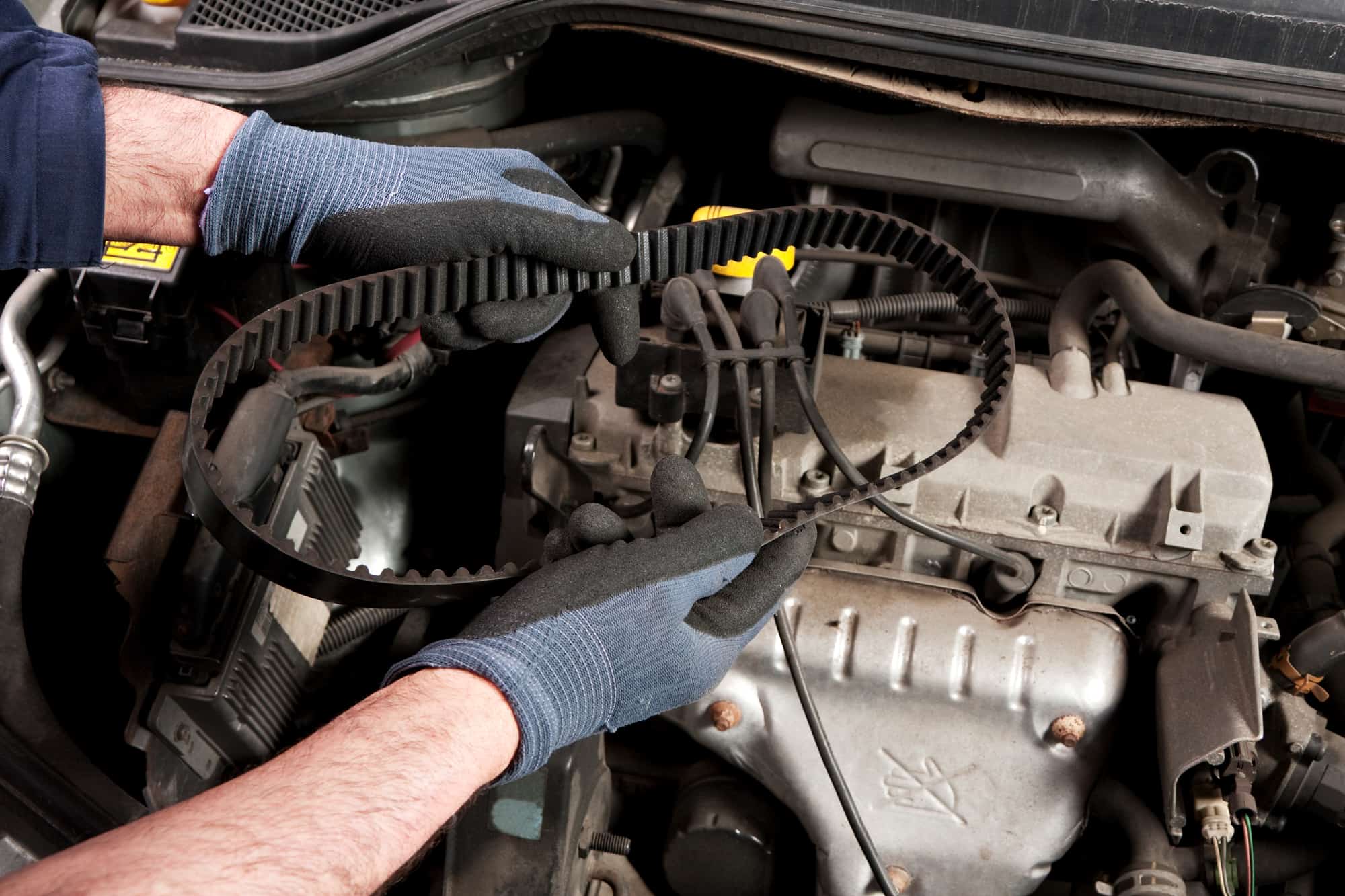
Check the alternator belt for cracks or missing teeth
Start by observing the belt with the engine running. Make sure that the belt is mounted properly and watch for slippage on the alternator pulley or the crankshaft pulley.
Some vehicles use a long belt that drives numerous pulleys and this can make it more difficult to spot a problem. If possible you should remove the belt for closer inspection. This will also allow you to check the condition of each pulley for worn bearings.
4. Check the battery terminals and wiring
Sometimes the battery terminal clamps can loosen over time and this can cause the check battery light to come on.
Try wiggling each battery clamp with your hand to see if it is loose and tighten if necessary. If the battery clamps have become corroded you will need to remove them from the battery first and clean them with a wire brush before you tighten them on to the battery.
Sometimes the terminals will be so badly corroded that they will need to be replaced. Depending on your vehicle, this may involve a trip to a mechanic of dealership. Some battery terminal clamps have intelligent sensors built in that require coding to the vehicle.
It’s also a good idea to check the condition of the wiring that is coming to and from the battery. This is the heavy, thick cables that are connected to the battery via the battery clamps. This cable is usually fairly resilient, but it can sometimes develop cracks in its out casing that can lead to short circuits.
If the battery wiring is dirty, start by cleaning it with a dry cloth. Check the cable condition using a torch and slowly work your way from the clamp back along the visible part of the cable. You may need to remove the cable clamp from the battery so that you can check the underside of the cable too.
If you find a crack or damage to the cable sheath, then it’s best practice to replace the entire cable (or piece of cable) rather than patching it up. If this is not possible, then there are battery cable repair kits available that will allow you to fix the cable safely.
What Does The Battery Light Mean?
The car battery warning light is there to warn you if there is a problem with the battery or battery charging system in your car. It’s an important warning light that you shouldn’t ignore.
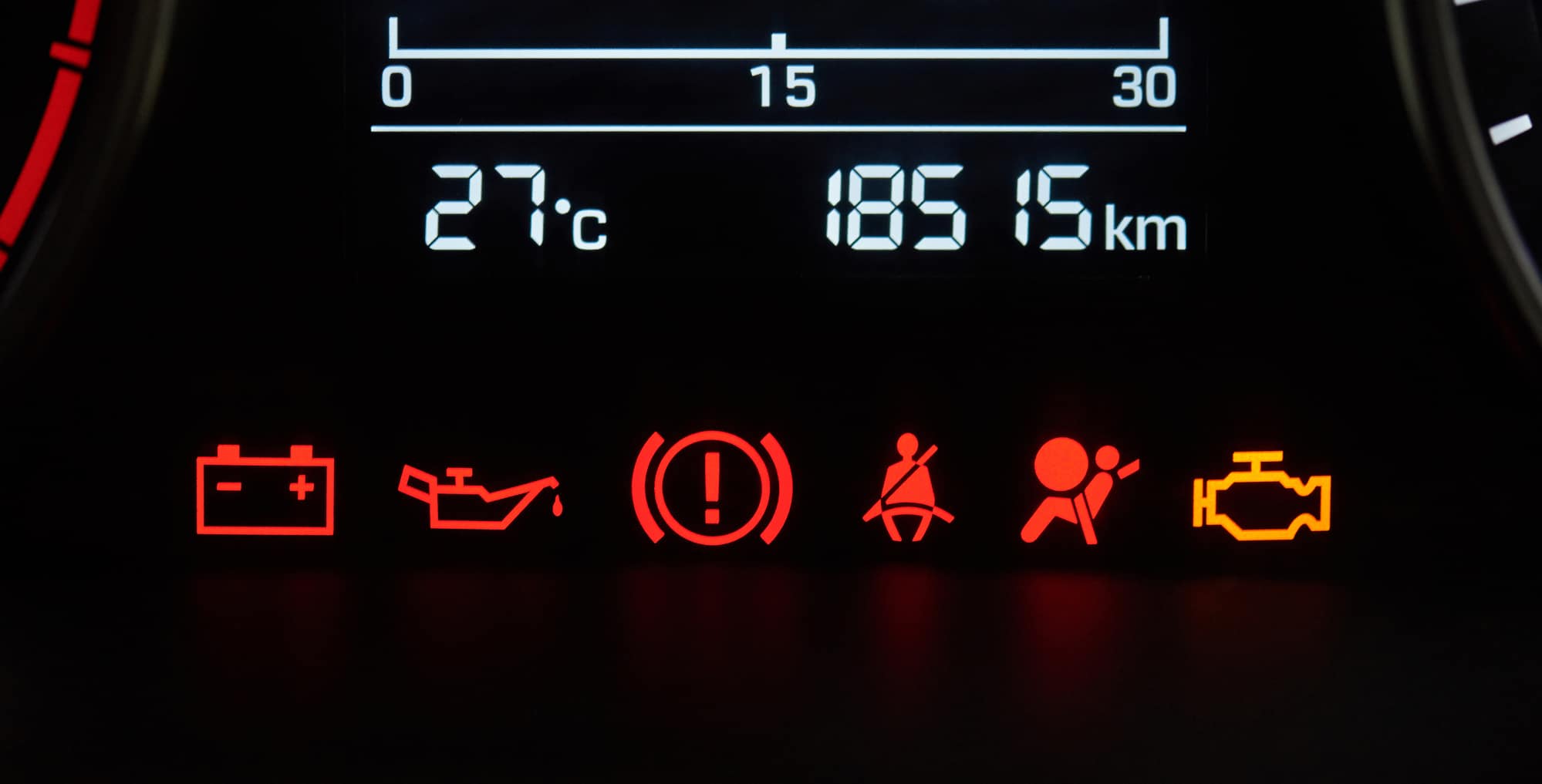
Common dashboard warning lights that come on and off during start up
When the engine is running, the engine control unit keeps a constant check on the battery voltage. This should be around 14 volts on most cars. If the voltage drops too much, or the ECU detects an irregular level of current then it will activate the car battery light.
Your car needs a lot of electrical energy to power all of the various systems such as the lighting, air conditioning and engine management systems. This requires a constant energy supply from the alternator when your car is running.
If you are driving when the battery warning light comes on, this can mean that the car battery is no longer charging. If this is caused by a faulty alternator, then your vehicle may be only getting its power from the battery and you could find yourself stranded within a few minutes.
What Should You Do When The Car Battery Light Stays On?
If the car battery light stays on after the engine starts, or comes on when you are driving, then this means there is a problem with the battery or the charging system.
Ideally you should pull over as soon as possible and not drive the car any further until you can get the car checked out as the car may only be running on battery power and could cut out at any time.
If you can’t stop driving, or it’s a short drive to your destination, then turn off as many electrical systems as possible to conserve energy.
FAQs
1. What does a red battery icon mean car?

A red battery icon on a car’s dashboard typically means that there is a problem with the charging system, which could indicate that the battery is not being charged properly.
This could be due to a number of issues, such as a faulty alternator, loose or corroded battery cables, or a dead battery. If the red battery icon appears on the dashboard, it is important to have the battery tested as soon as possible to diagnose and fix the issue.
Continuing to drive the car with a charging system issue could lead to a dead battery and potentially leave you stranded.
2. Why is my battery light on but alternator is charging?

If your battery light is on but your alternator is charging, it could be due to a few different reasons. Here are some possible causes:
1. Dirty or corroded battery terminals: If the battery terminals are dirty or corroded, it can prevent the battery from charging properly, even if the alternator is working correctly. The buildup of corrosion can create a barrier between the battery and the charging system, causing the battery light to come on.
2. Loose or damaged alternator belt: If the alternator belt is loose or damaged, it can cause the alternator to not work properly, even if it is still charging. This can cause the battery light to come on.
3. Faulty built-in voltage regulator: The voltage regulator is responsible for controlling the amount of voltage that the alternator produces. If the voltage regulator is faulty, it can cause the battery light to come on, even if the alternator is still charging.
4. Bad wiring or connections: If there is a problem with the wiring or connections between the battery, alternator, and voltage regulator, it can cause the battery light to come on, even if the alternator is still charging.
3. How long should a car battery last?
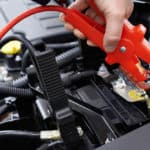
On average, a car battery should have a reliable lifespan of about three to five years. However, many batteries can last much longer than that, especially if they are well-maintained and not subjected to extreme temperatures or other harsh conditions.
Some car battery manufacturers offer warranties that last for five years or more, but the lifespan of a car battery can vary depending on a number of factors, such as the type of battery, the make and model of the car, and the climate in which the car is driven.







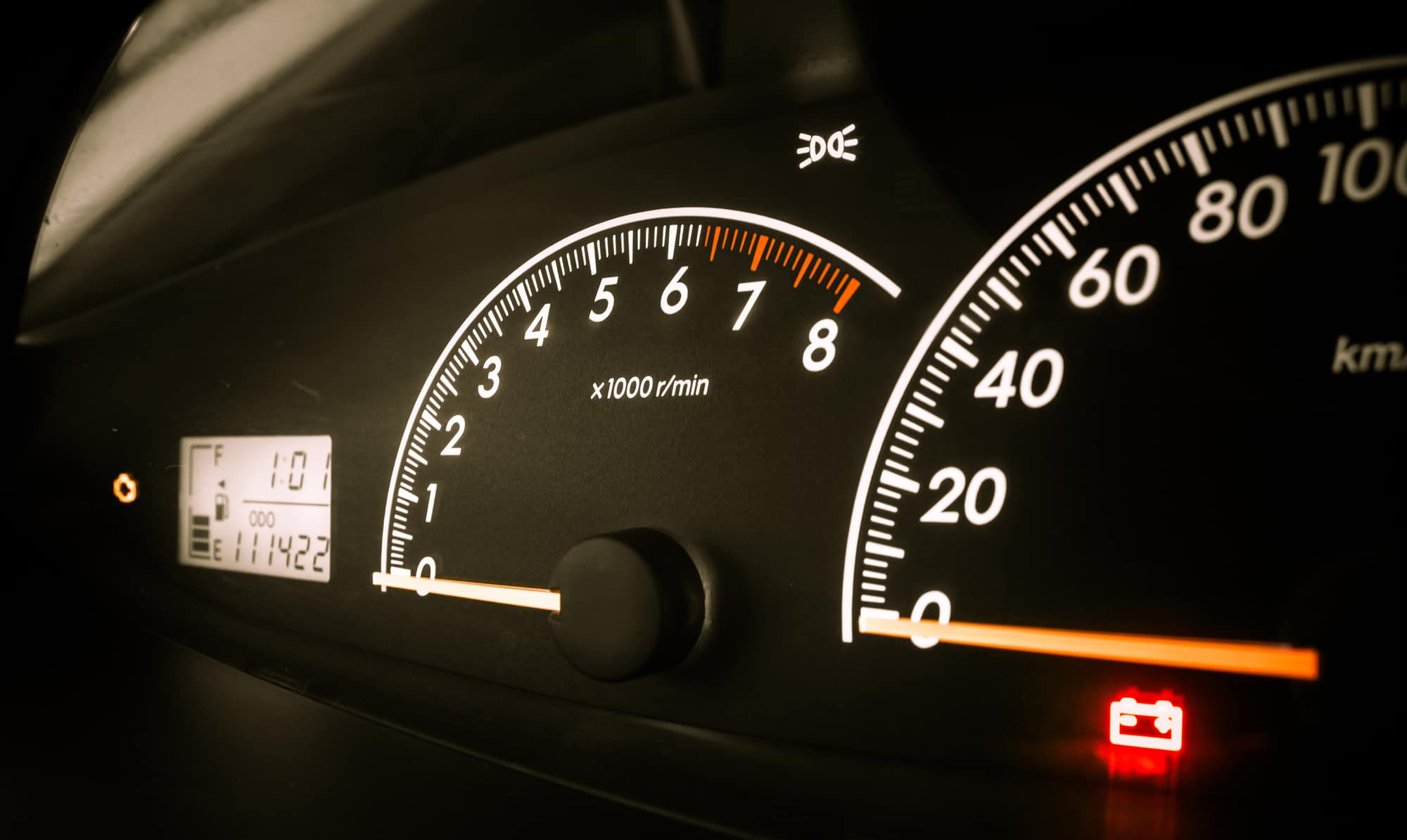



How can I accurately determine if my car’s battery light indicates a real issue or if it’s just a temporary glitch without specialized tools?
I’ve been troubleshooting the cause of my car battery light coming on and I think I’ve narrowed it down to a few possibilities based on my own diagnostics and what I’ve read here. However, I’m still unsure about how to properly check the alternator belt for wear or damage. Could you provide more detailed instructions or tips on how best to inspect the alternator belt condition on my own?